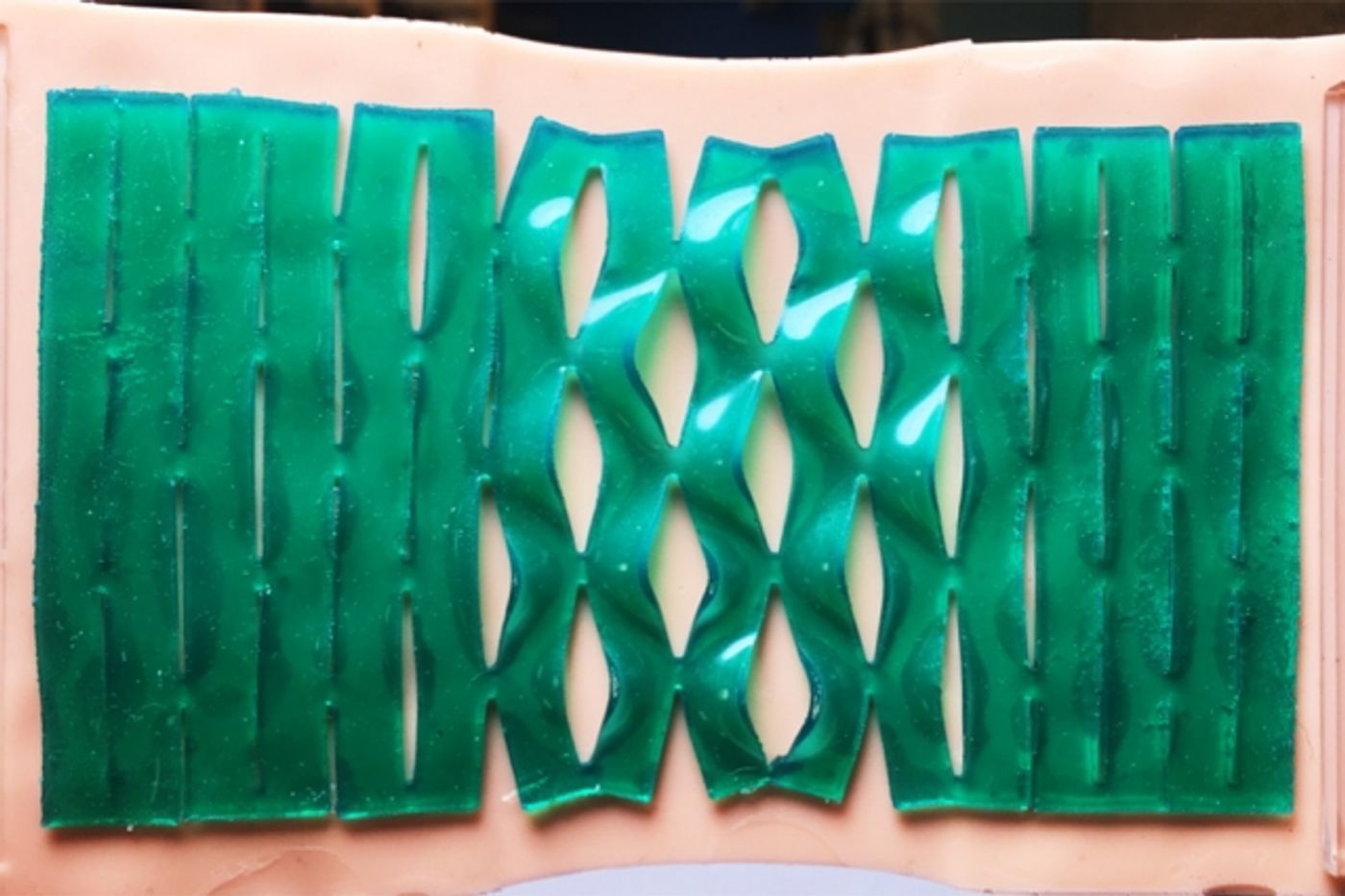New Bandages Stick to Bending Knees
Getting bandages and other adhesive materials to stick to moving body parts is challenging. A group of researchers from MIT’s department of mechanical engineering has used the Asian paper-cutting art of kirigami to inspire flexible bandages, which are cut with slits to improve their adherence to moving parts like elbows and knees. Three of the products they made stayed on a knee in motion for more than 100 bends. Their applications for the new material include adhesive bandages, a heat pad with warming wires, and a wearable electronic film embedded with light-emitting diodes.
“Adhesives like these bandages are very commonly used in our daily life, but when you try to attach them to places that encounter large, inhomogeneous bending motions, like elbows and knees, they usually detach,” says Ruike Zhao, an MIT postdoc who is the lead author of the corresponding study published in March 2018 in the journal Soft Matter.
As in all origami, kirigami projects involve transforming flat sheets of paper into 3D sculptures and structures. Kirigami is a unique form of origami because it involves cutting processes, instead of just folding. The regularly placed cuts used in the new bandages allow a rubber-like film to stay in place effectively. When a knee bends, the slits in the center open and those closer to the edges stay closed. The ones that open are able to reduce the amount of tension spreading through the film and so prevent it from peeling off or detaching from the skin. Kirigami has already been studied as a way to make products more stretchy, but the group claims to be pioneers in using it for adhesion research.
“In most cases, people make cuts in a structure to make it stretchable. But, we are the first group to find, with a systematic mechanism study, that a kirigami design can improve a material’s adhesion,” Ruike says.
The films are created by pouring a rubber solution or liquid elastomer into customized molds, which the team 3D prints. The molds have grooves that create patterned slits in the film when it cures and is removed. Ruike and her colleagues coated the film with an adhesive common in bandages to test its energy release rate, which is a measure of how far it can stretch before detaching.
The engineers identified three properties or parameters that can describe and guide further development of the materials’ adhesive abilities: partial debonding, meaning that the areas of film around an opening hold a partial bond to the surface as it moves; shear-lag, in which deformation of the film in some areas reduces strain on others; and inhomogeneous deformation, which means the film stays adhesive, “even as parts of its underlying surface may bend and stretch more than others.”
“These three parameters will help guide the design of soft, advanced materials … Just follow the mechanical guidance for an optimized design, and you can achieve a lot of things,” Ruike says.
Ruike and her team first tackled this challenge when a Chinese medical supply company approached them in the summer of 2016. The company reps hoped the engineers could make a better version of a popular pain-relieving bandage. The MIT group has now patented their film with slits and is continuing to work with the company on practical applications.
Other materials that could be used to create this useful slotted-film include polymers, metals and gels that can release medicine into skin.
“That’s our next step,” Ruike says.









